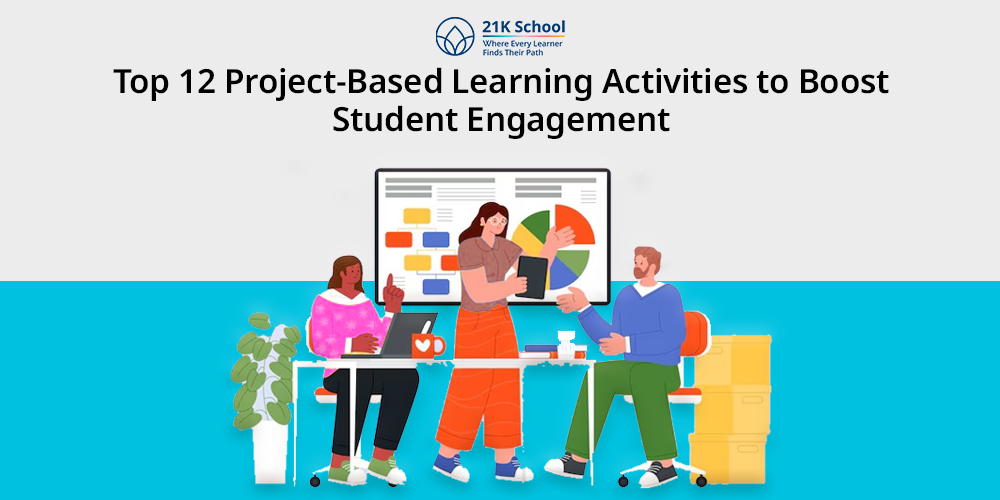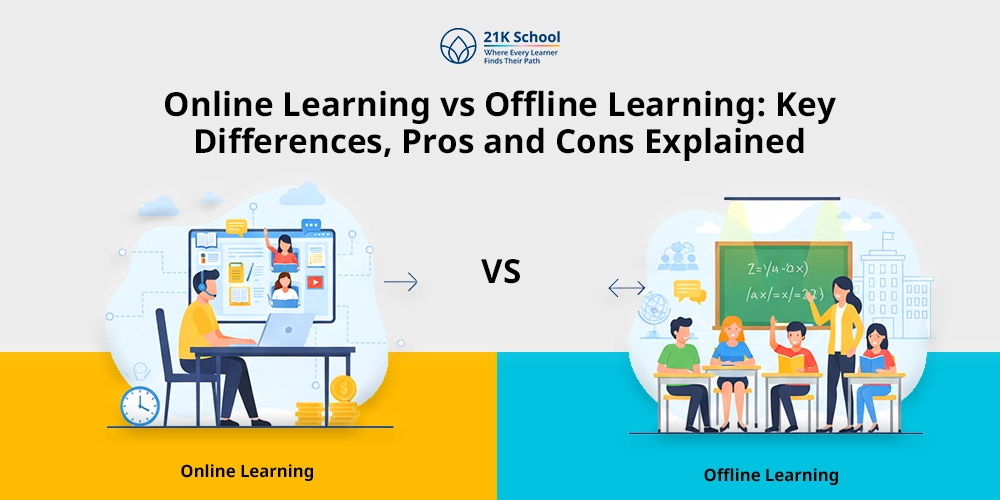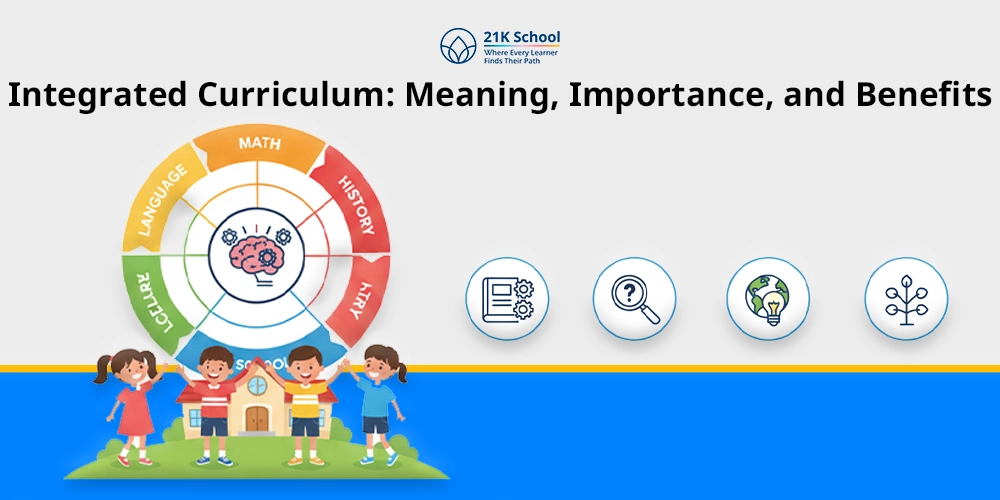
In today’s classrooms, education is evolving from passive note-taking to active, hands-on learning. One of the most effective approaches is Project-Based Learning (PBL), an instructional method that encourages students to explore real-world problems and challenges through projects.
Instead of memorising facts, students gain a deeper understanding of subjects by working on meaningful tasks. These activities build essential life skills like collaboration , critical thinking , and creativity .
Let’s explore what project-based learning activities are and discover some engaging ideas for the classroom.
Contents
- 1 What Are Project-Based Learning Activities?
- 2 Top 12 Project-Based Learning Activities
- 2.1 1. Community Garden
- 2.2 2. PBL Experts
- 2.3 3. Bridge Building
- 2.4 4. Community Service
- 2.5 5. Create a Community Mural
- 2.6 6. Current Events Analysis
- 2.7 7. Environmental Issues Exploration
- 2.8 8. Mathematics and Problem-Solving Projects
- 2.9 9. Mock Trial
- 2.10 10. Plan a Community Event
- 2.11 11. Creating a Podcast or Documentary
- 2.12 12. Business Plan Development
- 3 Conclusion
What Are Project-Based Learning Activities?
Project-based learning activities are tasks designed to engage students in solving real-world issues or answering complex questions. They involve research, design, creativity, and presentation.
These projects demonstrate interdisciplinary learning and are student-led, meaning learners play an active role in how they approach the task.
Through PBL, students don’t just learn concepts, but also apply them. Whether it’s science, social studies, math, or language arts, project-based learning can be adapted across subjects and grade levels.
Top 12 Project-Based Learning Activities
Here are some of the most impactful and easy-to-implement project-based learning ideas that educators can use to boost engagement and learning outcomes:
1. Community Garden
Creating a school or classroom community garden is a fantastic way to combine science, health, and teamwork. Students plan what to grow, study soil types, learn about plant life cycles, and take responsibility for the maintenance of the garden.
This hands-on project teaches sustainability, patience, and care. It also offers an opportunity to integrate math (measuring plots, tracking growth) and language (writing garden journals).
2. PBL Experts
Invite local experts or professionals to the classroom to work with students on real-world problems. For example, engineers can help with design challenges, or local business owners can guide students in creating a marketing plan.
This kind of collaboration bridges the gap between classroom learning and real-life application. Students also learn communication skills and how to ask meaningful questions.
3. Bridge Building
A bridge-building project combines engineering, physics, and math. Students can work in teams to design and build bridges using basic materials like straws, sticks, or cardboard.
Once complete, they test the durability of their structures and analyse what worked and what didn’t. This fosters analytical thinking, teamwork, and applied learning.
4. Community Service
Let students identify a need in their community and plan a service project around it. Whether it’s organising a donation drive, cleaning a park, or preparing care packages, community service projects create empathy and social awareness.
Students learn how to plan, delegate tasks, and reflect on the impact of their work. These are valuable life lessons that extend far beyond academics.
5. Create a Community Mural
Art meets social studies in this engaging activity. Have students research community values, local history, or social issues, and work together to design and paint a mural in the school or neighbourhood.
It encourages creative expression, teamwork, and civic pride. Plus, students get a visible, lasting reminder of their collaborative effort.
6. Current Events Analysis
Assign students to follow a current event over time and present their findings. They can explore the issue’s history, track how it evolves, analyse public opinion, and present potential solutions.
This project builds research skills, critical thinking, and media literacy. It’s a great way to help students become more informed and active citizens.
7. Environmental Issues Exploration
Students investigate a local or global environmental issue, such as pollution, climate change, or deforestation. They then create awareness campaigns, design eco-friendly solutions, or develop action plans.
Learn how to raise environmental awareness among young people .
This kind of project not only promotes environmental responsibility but also integrates science, geography, and public speaking skills.
8. Mathematics and Problem-Solving Projects
Turn math into something tangible. Ask students to solve a real-world problem like designing a budget, planning a trip, or measuring school energy use.
These math-based projects show students how numbers apply in everyday life. They also encourage logical reasoning and decision-making.
9. Mock Trial
A mock trial project is a brilliant way to teach civics, law, and public speaking. Students take on the roles of lawyers, witnesses, and judges as they reenact a historical or fictional case.
This activity strengthens research, writing, argumentation, and collaboration, all while making learning interactive and fun.
10. Plan a Community Event
Let students plan a real or simulated community event like a school fair, talent show, or cultural festival. They’ll need to handle everything—budgeting, logistics, advertising, and coordination.
It’s a comprehensive PBL activity that teaches organisation, teamwork, and problem-solving in a very real-world context.
11. Creating a Podcast or Documentary
Students choose a topic they care about and produce a podcast or documentary. They research, write scripts, conduct interviews, and edit the final product.
This helps build storytelling, technical, and digital communication skills. It also gives students a platform to express their voice creatively.
12. Business Plan Development
Have students come up with a business idea and develop a complete business plan, including a product, marketing strategy, and cost analysis. They can even pitch their plan to classmates or local entrepreneurs.
This teaches financial literacy to students , along with creativity and entrepreneurship, all essential for future readiness.
Conclusion
Project-based learning activities bring subjects to life. They shift the focus from rote learning to meaningful engagement, helping students understand not just what they’re learning, but why it matters.
Whether it’s solving real problems, creating something new, or contributing to the community, PBL empowers students to take charge of their learning journey. With thoughtful planning and the right guidance, these activities can turn every classroom into a dynamic, student-driven space full of curiosity and growth.
Read next: Project-based Learning for Students With Special Needs .


